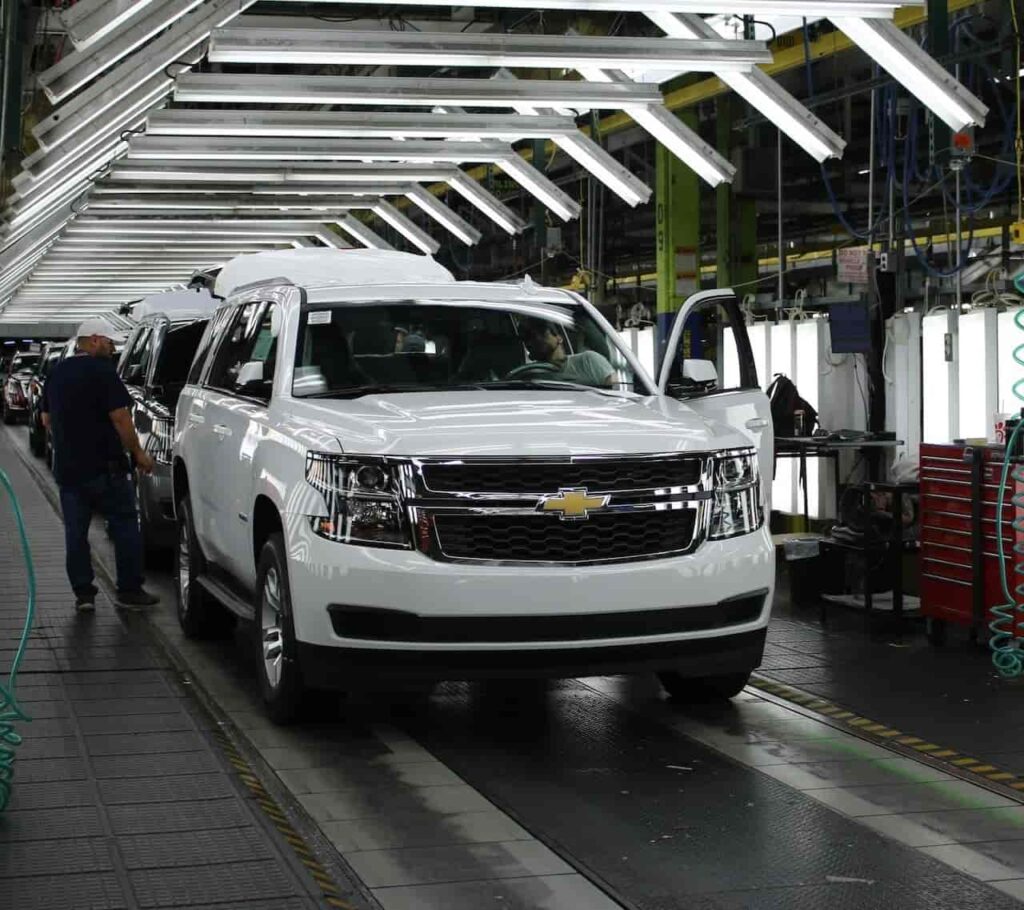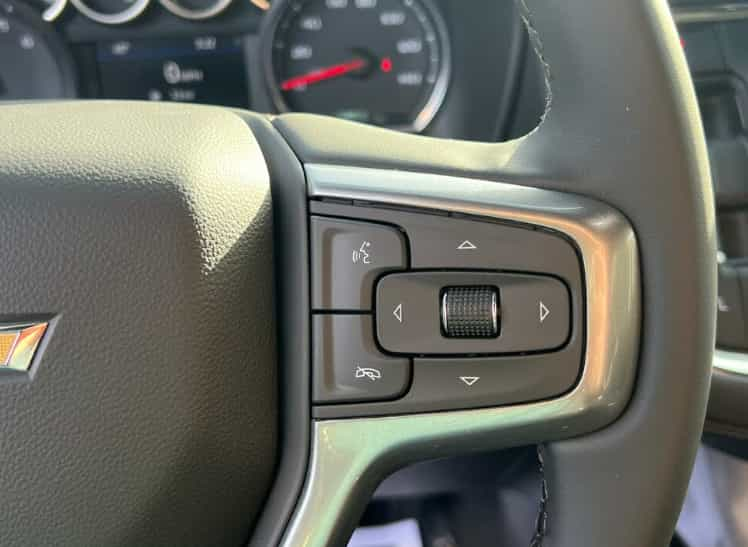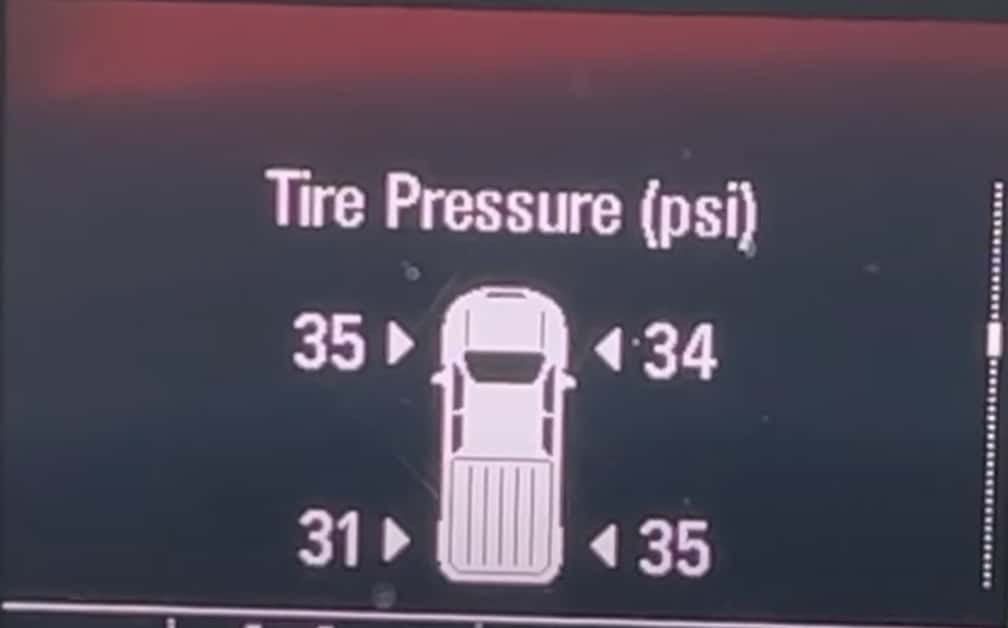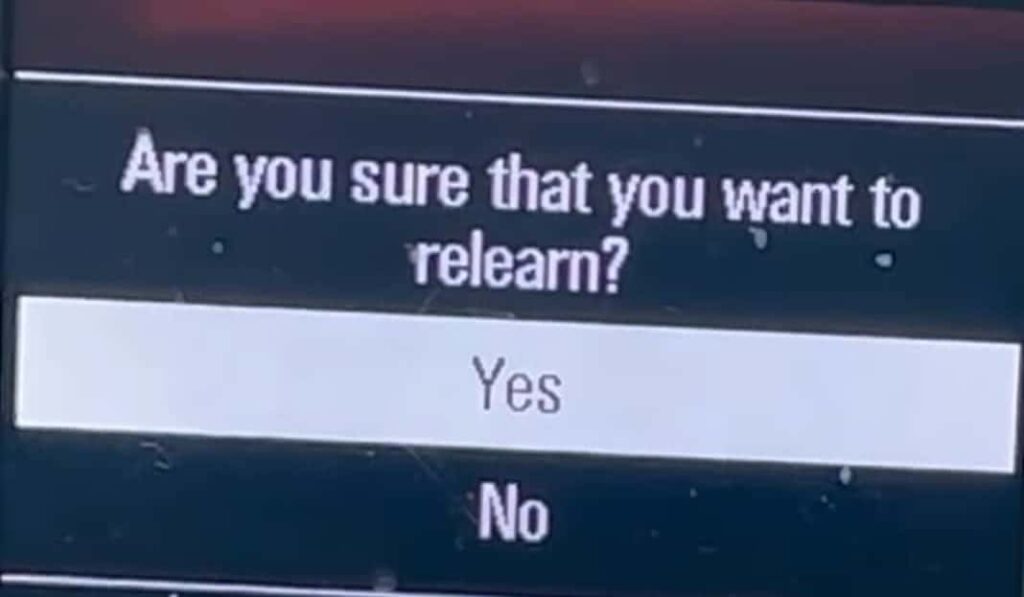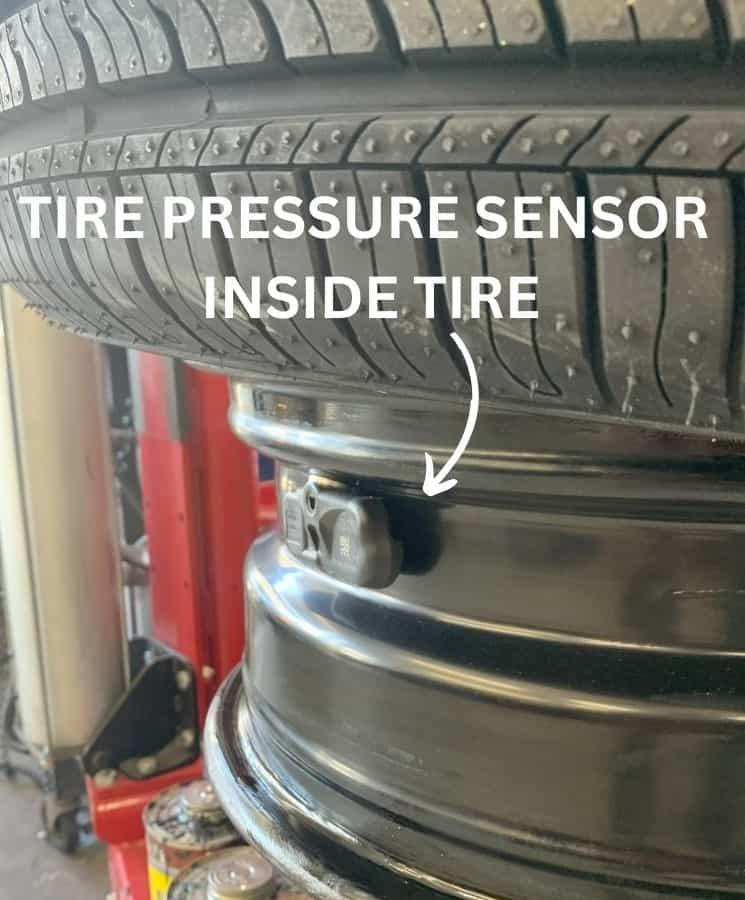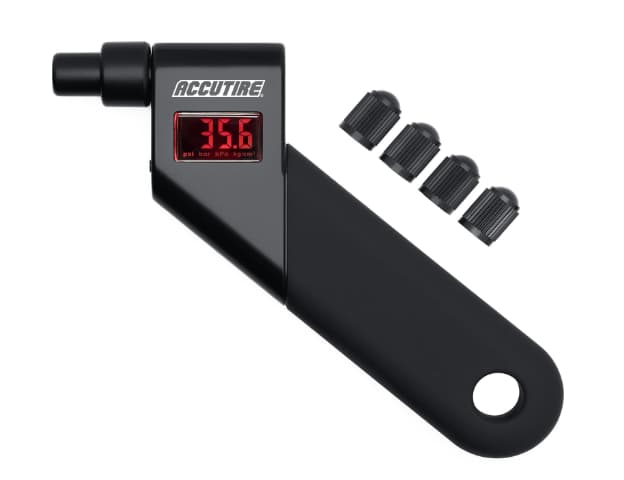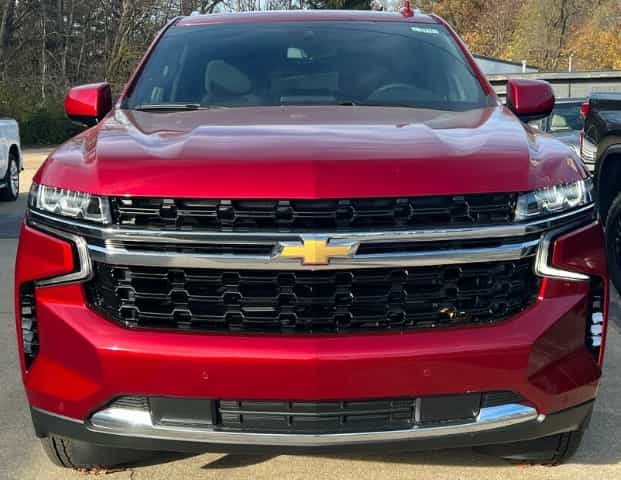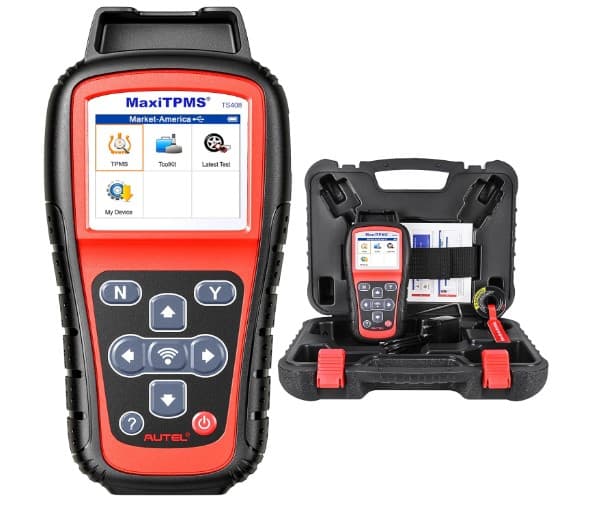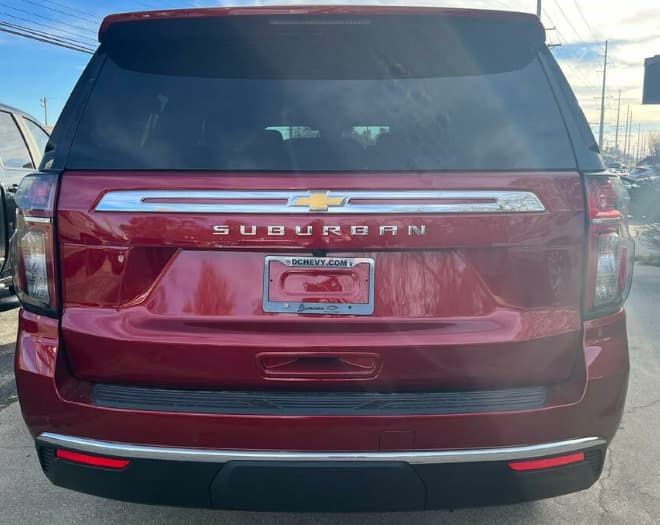Steps to Reset the Chevy Suburban TPMS
Inflate all 4 tires to the recommended cold air pressures.
Drive the Chevy Suburban for 5-10 minutes at speeds exceeding 25 Mph.
NOTE: The Chevy Suburban Does NOT have a tire pressure reset button.
How to Relearn The Chevy Suburban TPMS Without a TPMS Tool
After rotating the Chevy Suburban tires, servicing or repairing any of its tires and replacing any tire pressure sensors, the tire pressure sensors need to go through a relearning process. The tire pressure sensor relearn process is completed so the Suburban’s computer knows which location each sensor and tire is at on the SUV. Complete the following steps:
Inflate all four tires to 40 Psi.
With the engine off, switch the ignition of the Chevrolet Suburban to the “on” position.
Access the “Menu” via the dashboard screen.
Proceed to “Vehicle Information.”
Enter the “Tire Pressure Menu.”
For a few seconds, press and hold the SET/CLR button.
Confirm relearn when prompted with the message “Are you sure you want to relearn?” by selecting “Yes.”
Listen for two horn beeps, signaling the start of relearn mode, and the display will show “TIRE LEARNING ACTIVE.”
Begin with the driver side front tire, letting out air until the horn beeps.
(to release air, gently push in the valve stem core)Move on to the front right, rear right, and finally the rear left tire, releasing air until the horn beeps for each.
Once all four tires have been attended to and the horn has beeped for each, the relearn process is complete.
Turn off the ignition and adjust the tire pressures to their appropriate levels.
How to Reset the Chevy Suburban TPMS With a TPMS Tool
Inflate each tire to 40 Psi.
Use the steering wheel controls and scroll until your current tire pressure displays are on the screen.
Hold down the trip button on the right of the display screen.
A message will appear that reads “Are you sure that you want to relearn?”
Select “Yes”
The horn will beep twice and the display screen will read “Tire Learning Active”
Go to the front left wheel (driver side front tire) and put the TPMS tool directly in front of the valve stem. Press the trigger function on the tool. The horn will beep one time.
Do the same thing at the front right wheel, then rear right wheel, and rear left wheel. In that order.
Readjust the tire pressures of each tire back to the recommended pressure.
2023 Chevy Suburban Tire Pressure
TIRE SIZE | FRONT PSI | REAR PSI |
265/65R18 | 35 | 35 |
275/55R20 (2WD) | 39 | 39 |
275/55R20 (4WD) | 38 | 38 |
275/60R20 | 35 | 35 |
275/50R22 | 39 | 39 |
What is the Chevy Suburban TPMS?
The Chevrolet Suburban TPMS or tire pressure monitoring system is what monitors the tires current pressures and alerts the driver if any of its tires are underinflated. The Chevy Suburban tire pressure monitoring system is made up of tire pressure sensors in each tire, an ECM, and a TPMS receiver module.
How Does the Chevy Suburban TPMS Work?
Tire Pressure Sensors: The Chevy Suburban has one tire pressure sensor inside each tire. They are not visible without removing the tire from the wheel. They are mounted at the base of each valve stem and are essentially a small circuit board, radio transmitter and battery all housed in a plastic case. Each sensor gathers current tire pressure information and sends the data to the TPMS receiver module. The Chevy Suburban spare tire does not have a sensor.
TPMS Receiver Module: The Chevy Suburban TPMS receiver module receives the tire pressure sensor data sent from each tire and organizes it before forwarding it to the ECM.
Engine Control Module: The Chevy Suburban ECM is the brain and main computer of the SUV. One of its many functions is to compare the current tire data to the Suburban’s optimal tire pressure. If the ECM finds a tire’s pressure too low, it triggers a low tire pressure warning.
First Thing to Do When the Tire Light Turns On
Immediately after the Chevy Suburban low tire pressure symbol lights up on the dashboard, pull over. Park in a safe location, manually check each tire with a tire pressure gauge, and inflate the tires to the recommended air pressure.
What Triggers the Chevy Suburban Low Tire Pressure Light?
Tires inflated to incorrect pressures (too low or too high)
Missing TPMS sensors (spare tire)
TPMS sensor batteries running low or failing
Software or other problems with the TPMS receiver module or the Chevy Suburban’s Electronic Control Module (ECM)
Interference from electromagnetic fields generated by other vehicles or electronic devices
Changes in atmospheric pressure due to weather changes
Overloading the SUV beyond its rated capacity
Usage of tire chains
Thick tinting on the SUV’s windows
Variations in the temperature of the road
Incorrect tire sizes
Physical harm to TPMS sensors when installing tires
Not resetting or relearning the TPMS after replacing or rotating tires
Why You Should Only Adjust Chevy Suburban Tire Pressure When Tires are Cold
Tire pressure should only be adjusted when the tires are cold for air pressure accuracy. Tires are officially in a “cold state” after they have not been driven on for 3 or more hours. Tire pressure recommendations are for tires in a cold state.
Hot Tires and Air Pressure: Avoiding Overinflation Risks
Setting or adjusting tire air pressure when the tires are hot will likely cause overinflation. When tires are hot the pressure temporarily increases. Tire temperature can increase from being driven on and from an increase in air temperature.
Can a Change in Altitude Trigger the Tire Light?
A change in altitude can have an effect on tire pressure. For every 1,000 feet of elevation gained, tire pressure will increase by approximately 0.5 psi. For example, a Chevy Suburban traveling from sea level up a 10,000 foot mountain could experience a tire pressure increase of around 5 psi. This typically means a change in altitude will not cause the low tire pressure alert to be triggered.
Chevy Suburban Tire Pressure Sensor Batteries
Chevy Suburban tire pressure sensor batteries are small silver oxide batteries that are non-rechargeable and non-replaceable. They are directly connected to the sensor’s circuit board. They can last between 5-15 years or up to 150,000 miles of driving. Once the battery has depleted the entire sensor needs to be replaced with a new one.
Is It Safe to Drive the Chevy Suburban With the Low Tire Light On?
We recommend not driving with the low tire pressure light on until you have determined why the tire light has been triggered. If a tire is losing air and deflating, this is not safe to drive. If a tire pressure sensor battery is dead and the tire light is on, it is safe to drive because it is not an air pressure issue.
How Far Can the Chevy Suburban Be Driven With the Tire Light On?
The Chevy Suburban does not have a preset amount of miles or minutes that can be driven safely once the low tire light has been triggered. As soon as the tire light turns on, pull over and visually inspect each tire and check each tire’s air pressure with a digital tire pressure gauge.
Chevy Suburban Tire Pressure Sensors With New Wheels or Tires
When new wheels or rims are installed on the Chevy Suburban there are two options:
1. Swap the original tire pressure sensors onto the new wheels.
2. Install new tire pressure sensors onto the new wheels and use a TPMS programming tool to sync them to the Chevy Suburban ECM.
When new tires are installed on the Chevy Suburban, follow the tire pressure sensor relearn procedure.
Why is the Chevy Suburban Tire Light Flashing?
The Chevy Suburban’s TPMS self diagnostic feature is an invaluable feature of the SUV. When the tire light is flashing and then stays on, a tire pressure sensor has stopped communicating with the Suburban’s ECM or TPMS receiver module. A flashing tire light is known as a TPMS malfunction. This usually happens for one of three reasons:
A tire pressure sensor battery is low or completely depleted and has stopped functioning.
The spare tire has been installed in place of a regular tire and does not have a tire pressure sensor installed.
A tire pressure sensor has been damaged or broken during new tire installation.
Can the Chevy Suburban TPMS Be Disabled?
Removing the tire pressure sensors from the wheels will not disable the Chevy Suburban tire pressure monitoring system. Doing so will cause a TPMS malfunction which means the low tire alert symbol will flash.
Using a TPMS Programming Tool to Diagnose the Chevy Suburban Tire Pressure Sensors
To test each Chevy Suburban tire pressure sensor individually you will require a TPMS diagnostic tool. The Autel TPMS diagnostic tool I use and recommend allows you to scan and test each tire pressure sensor and then provide a report on the functionality of each sensor. The report provides each sensor’s current battery life, sensor transmitter signal strength, and tire temperature. If the report shows that any of these markers are abnormal, (such as low battery or weak signal strength) that particular sensor must be replaced with a new one.
Weather-Induced Tire Pressure Changes in the Chevy Suburban
A change in weather and air temperature is a very common reason for the low tire pressure warning light to turn on. The fact is that for every 10°F change in air temperature, the tire pressure will change by 1 Psi. This means that if the Chevy Suburban tire pressure is at 39 Psi and the temperature drops by 40°F overnight, the Suburbans air pressure will drop to at least 35 Psi (4 Psi loss). This can cause the low tire pressure light to turn on. To attempt to prevent this from happening as often as possible, adjust your Chevy Suburban tires air pressure when they are in a cold state.
Overcoming TPMS Reset Hurdles With Temporary Tire Overinflation
If your Chevy Suburban tire pressure light does not turn off or reset after following the TPMS reset steps and the tire pressure sensor relearn protocol, temporarily overinflate your tires by 5 Psi. If the recommended tire pressure is 39 Psi, inflate it to 44 Psi and then drive the Suburban for a few miles at speeds exceeding 25 Mph. Then, re-attempt the TPMS reset process and tire pressure sensor relearn process with the tires over-inflated. Afterward, remove the excess air so the tires are at the recommended air pressure.
Detecting Tire Leaks With Soap and Water: The Bubble Method
To find out where exactly on a tire it is leaking from, follow these steps:
Inflate the leaking tire to 40 Psi.
Fill a spray bottle with water and liquid soap.
Spray the tire with the soap/water mixture. Be sure to spray the tire bead and valve stem.
Examine the tire for bubbles and trace them to the source.
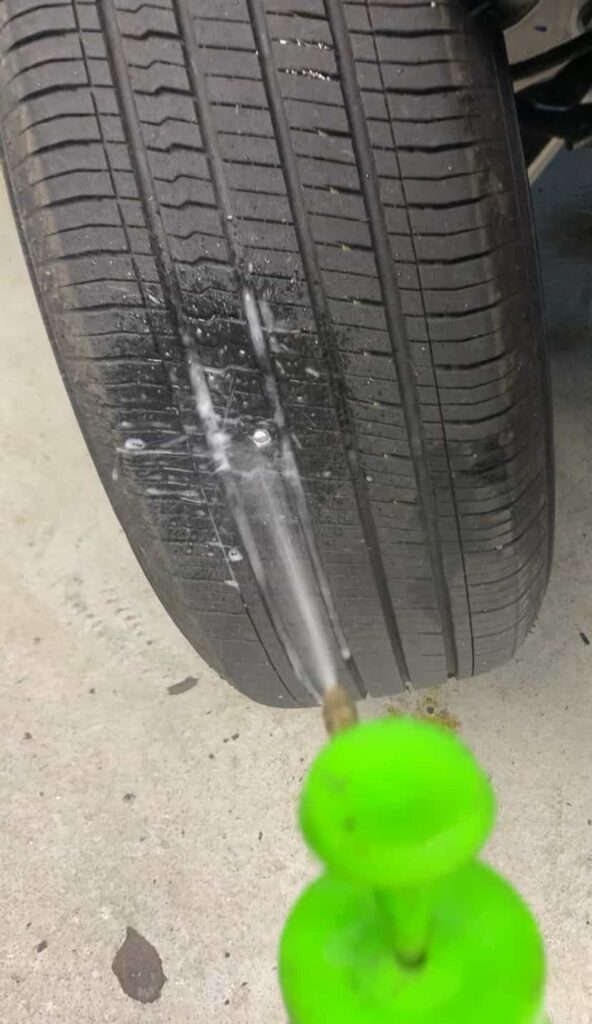
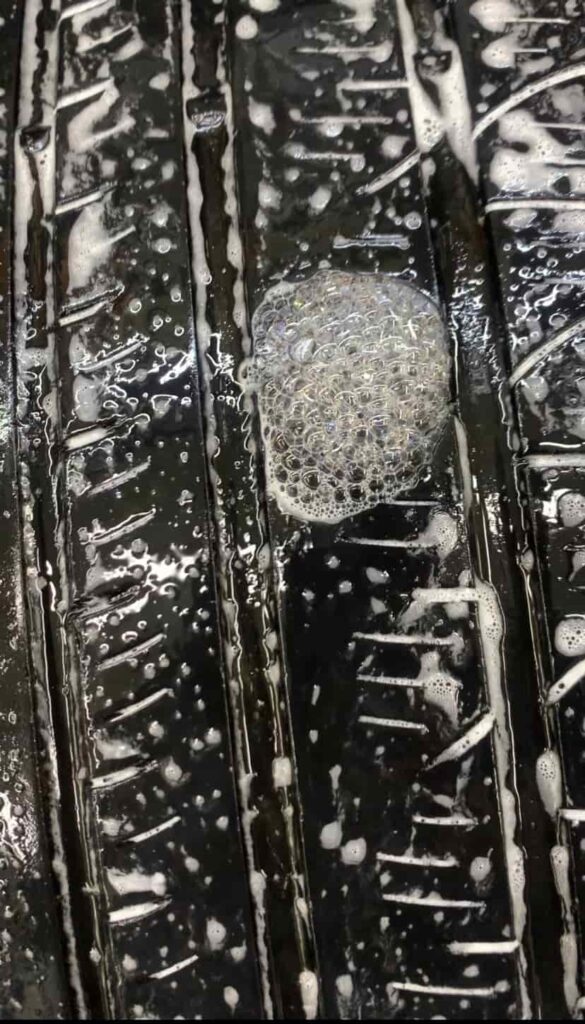
Addressing Chevy Suburban TPMS Issues: Battery Reset Procedure
If the Chevy Suburban TPMS reset and sensor relearn procedures do not turn off the low tire pressure light, disconnecting the SUV’s main 12 volt battery will erase any temporary TPMS diagnostic trouble codes from the ECM.
Turn the engine and all electronics (radio, lights, etc.) Off.
Loosen the negative terminal hold down and remove the terminal.
Wait a moment and then reconnect and tighten the terminal back down on the battery.
After following these 3 steps the low tire pressure light will turn off. If the low tire light turns back on after driving the Chevy Suburban there is either a faulty tire pressure sensor or a tire is losing air pressure.
Mazimizing Fuel Efficiency With Correct Tire Pressure in the Chevy Suburban
Proper tire pressure is critical for fuel efficiency in the Chevy Suburban. For instance, it’s estimated that for every 1 psi drop in the average pressure of tires, a vehicle’s gas mileage is reduced by 0.2%. Considering a Suburban’s large size and weight, this could mean that running tires underinflated by 5 psi can lead to a 1% drop in gas mileage.This can translate to a significant cost over time at the pump as well as an increased environmental impact due to higher CO2 emissions.
Automotive Technician's Take on Using Tire Plugs for Tire Repairs
I have personally been working as an automotive technician for many years and use tire plugs to fix tire punctures regularly. Tire plugs are a great permanent solution as long as they are not used on a tire sidewall or if the tread of the tire is completely worn. If the puncture is very large, either replace the tire or use a tire patch.
Tire Sealants for Leaks: Ensuring TPMS Sensor Safety Post-Repair
Using tire sealants to repair a leaking tire is a good short term solution in an emergency situation. Be aware that most tire sealants are technically a liquid and can potentially damage the circuit board of the tire pressure sensor in the tire the sealant is used in. We suggest having your tire pressure sensors tested after using a tire sealant.
Everything in this article is applicable to all Chevrolet Suburban models and versions including the Chevy Suburban LS, LT, Z71, RST, Premier, and High Country.
Please note that this blog post contains Amazon affiliate links. This means that if you make a purchase through one of these links, we at TPMSRESET.COM may earn a small commission at no extra cost to you. We only recommend products that we personally use and believe in. Thank you for supporting us.
